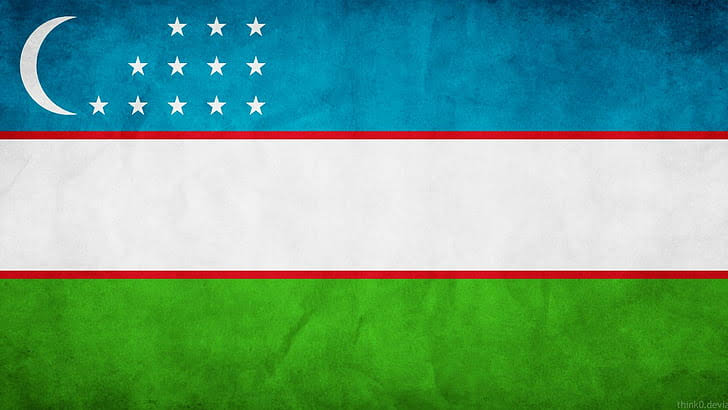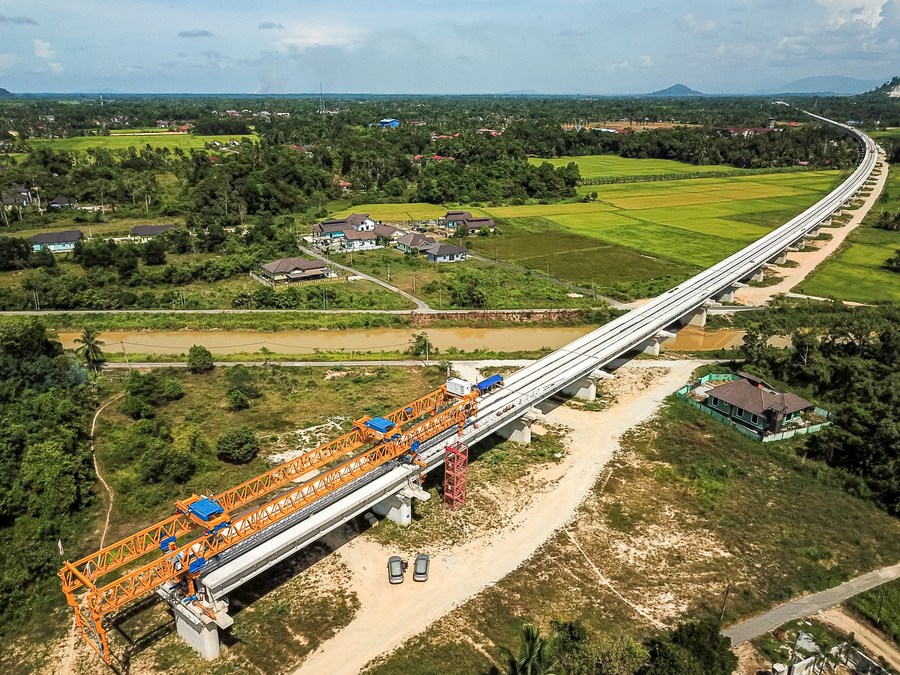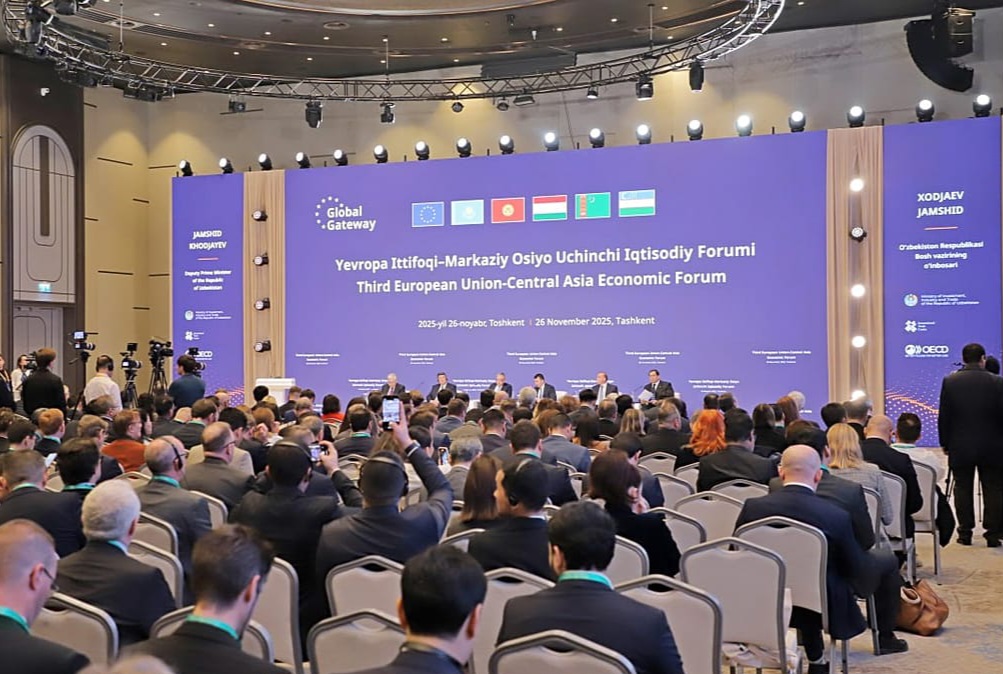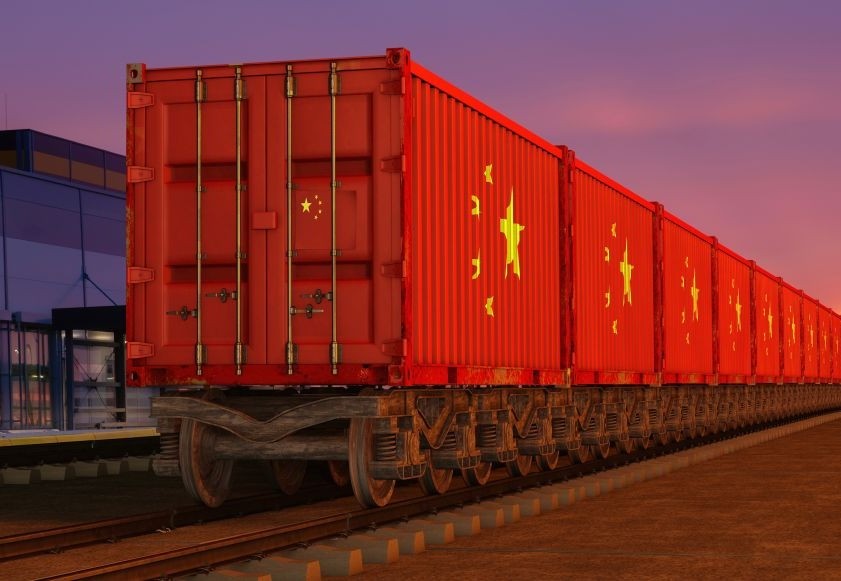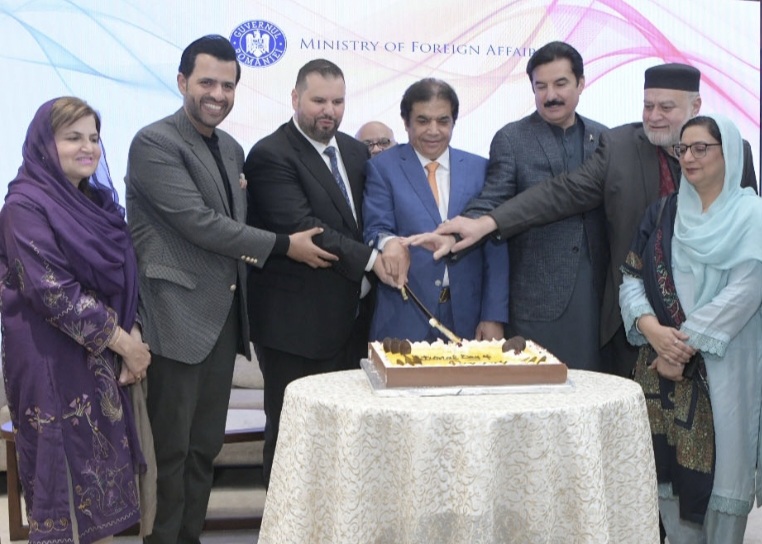Despite the limited access to the world’s main ports, Uzbekistan can fully develop the transport and logistics industry through the formation of land transport corridors, developing them throughout the Eurasian region. Situated at the center of the intersection of trade routes during the Great Silk Road, Uzbekistan has a unique opportunity to become an important provider of cargo logistics between China and Southern Europe, on the one hand, and the Hindustan Peninsula and the CIS, Northern Europe, on the other hand.
The share of landlocked countries in world exports is less than 1%. In addition, the share of Central Asian countries in world exports of transport services is very small and is represented in the following proportions: Uzbekistan, which has access to the sea only through two countries, – 0.1%, Kazakhstan – 0.3%, Tajikistan – 0.007%, Kyrgyzstan – 0.03%.
However, at the same time, the transport complex of Uzbekistan maintains a dominant position in foreign trade in services and is one of the main sources of foreign exchange in the country. Transport services in the republic form 43% of the country’s total export of services and 65% of the balance of foreign trade in services. Revenues from the export of transport services of Uzbekistan in 2022 amounted to 2.2 billion US dollars, and the positive balance of foreign trade in transport services amounted to 1.7 billion US dollars.
One of the main problems of international freight transportation in Uzbekistan is the underutilization of its export and transit potential, which reduces revenues from the export of transport and logistics services. For example, when comparing actual exports in tons, Uzbekistan is inferior to Russia by 20 times, Turkey by 10 times, and Kazakhstan by 9 times.
In 2023, the volume of interstate cargo transportation of the Republic of Uzbekistan amounted to 62 million tons, which is 16% higher than in 2022. The largest share in the volume of export-import cargo transportation of the republic falls on Kazakhstan (30%), to a lesser extent on Russia (26%), China (10%) and Afghanistan (4%). Rail transport accounts for the largest share (76%) of international cargo transportation of Uzbekistan (export, import and transit). Export of transport services includes cargo transit through the territory of Uzbekistan with a total share in the export of railway services of up to 45%.
The Unrealized Transit Crossroads of Eurasia
One of the main global logistics areas is trade between China and the EU. According to the ERAI review, in 2023, trade turnover between them amounted to 738 million euros, and according to Eurostat, exceeded 104 million tons. In the current reality, rail transport between Europe and China is carried out along the Eurasian route through the territories of Kazakhstan, Russia, Belarus; Mongolia and Russia (Naushki border crossing), as well as along the Trans-Caspian International Transport Route – TITR (Kazakhstan, the Caspian Sea, Azerbaijan, Georgia, the Black Sea).
Some of the cargo flows that previously passed through the northern corridor have been redirected to the TMTM. However, the Eurasian route continues to hold a leading position. In 2023, a total of 674 thousand TEUs traveled along this route, which is 1.1% less than the 2022 figure (681 thousand TEUs), but at the same time, in the first half of 2024, the volume of container transportation by China-Europe trains along the TMTM increased by 12.8% with a volume of 196.6 thousand TEUs.
As can be seen, Uzbekistan does not fit into the list of major transit countries between China and the EU in the “Eurasian” and “trans-Caspian” directions, and claims only part of the target markets, mainly in the direction of the Southern Corridor through Turkmenistan, Iran and Turkey.
Thus, a limited number of international transport corridors pass through the territory of Uzbekistan. The main countries that form Uzbekistan’s transit are neighboring Afghanistan, Kazakhstan, Tajikistan and Kyrgyzstan, and Russia, which is considered an important trading partner for the Central Asian countries. The region’s transport isolation, undiversified transport routes and limited export supplies, mainly in the northern direction, lead to a loss of profit due to the sale of domestic goods mainly to neighboring countries at a fairly low cost.
Transit Priorities
In order to sell domestic products at competitive world prices, Uzbekistan needs to develop additional export trade routes to other countries, such as China, the Asia-Pacific region, the Middle East, India and Pakistan, etc. And for this, competitive, effective transport and transit corridors are needed, allowing for an increase in the volume of transit cargo through the Republic of Uzbekistan.
Therefore, the priority areas designated until 2030 for the development of international transport corridors and increasing the volume of transit traffic through the territory of the republic to 16 million tons include the task of increasing revenues from the export of transport services. The key task here is to increase the volume of multimodal cargo transportation in the directions China – Kyrgyzstan – Uzbekistan (Kashgar-Irkeshtam-Osh-Andijan-Tashkent) and Uzbekistan – Afghanistan – Pakistan (Termez – Naibabad – Logar – Kharlachi).
China – Kyrgyzstan – Uzbekistan . The volume of cargo transportation of China with such countries as Turkey, Iran, Turkmenistan, Afghanistan, Pakistan amounted to almost 50 million tons in 2023, with the main volume of cargo transportation carried out by sea transport. Studies have shown that it is possible to attract part of the cargo to the route “China-Kyrgyzstan-Uzbekistan”, in the amount of about 10 million tons, and with a stable organization of cargo transportation along the route, the volume of cargo transportation by 2040 can increase 4 times.
Uzbekistan – Afghanistan – Pakistan . Geographical proximity to Afghanistan, to the south with Pakistan and India gives Uzbekistan the opportunity to reveal its existing potential and provide cargo transportation services in both export, import and transit communications in the direction of the countries of South Asia (Afghanistan, Pakistan and India), without competing for the existing transport and trade corridors. Therefore, Uzbekistan is extremely interested in trade and transport cooperation with Afghanistan and in the implementation of the Trans-Afghan Railway project “Uzbekistan-Afghanistan-Pakistan”. This road will allow establishing direct railway communication between Uzbekistan and Pakistan through the territory of Afghanistan with further access to the ports of the Indian Ocean.
The significance and effectiveness of the Uzbekistan-Afghanistan-Pakistan (UAP) project may increase significantly if it is implemented in parallel with the project to build the Uzbekistan-Kyrgyzstan-China (UKC) railway line, which will connect China with Pakistan and India in the shortest way and will allow for a significant increase in the volume of transportation from/to China to the countries of Central and South Asia.
In this regard, within the framework of two strategic projects of the UAP and KKU, the ongoing activities to form new uninterrupted promising multimodal transport corridors in the region are relevant. In November 2023, in Tashkent, within the framework of the meeting of ECO ministers, the Protocol of the multilateral meeting on the formation and development of the corridor “Uzbekistan – Turkmenistan – Iran – Turkey” was signed, which involves the transportation of goods from China to the EU countries.
In November 2023, a Memorandum of Understanding on the creation and development of the international transport corridor “Belarus-Russia-Kazakhstan-Uzbekistan-Afghanistan-Pakistan” with access to the ports of the Indian Ocean was signed in Tashkent. In April of this year, meetings of transport departments and railway administrations of the countries participating in this corridor were held in Termez, following which a Roadmap was adopted, including the main activities for the further development of the corridor.
It should be noted that the above documents are open for other interested countries to join the transport corridors.
Multivariate Transport Policy
It should be noted that the policy of forming international transport corridors of Uzbekistan is somewhat different from the policy of a number of other countries, and is aimed at attracting as many countries as possible to the active development of an extensive network of transport corridors that ensure effective foreign trade cargo transportation. As was emphasized by the President of the Republic of Uzbekistan Sh. Mirziyoyev at the SCO Summit in Astana on July 4 of this year, “the multi-variant nature of transport corridors is the most important condition for the sustainable development of our entire region.”
However, the effective functioning of various corridor options is hampered by the lack of uniform Rules for the carriage of goods, a uniform standard for a transport document that would be used for all types of transport, as well as the lack of digital platforms for providing customers with remote cargo transportation services from anywhere in the world. All this slows down the transport integration of Asian countries in the context of the development of routes between Central and South Asia, and China, on the one hand, and the integration of Asian countries with European communications, on the other.
In order to solve the problems of differences in legal and technical standards for cargo transportation between the countries of Europe and Asia, which prevent the full transportation of goods without delays, it makes sense to develop new services for participants in the logistics and cargo transportation market, using modern technologies.
These include the production of universal wagons with sliding wheel pairs at the country’s industrial facilities, with their subsequent use both in Uzbekistan and in the Southern countries, China and others, as well as the development of a digital platform for online registration of cargo transportation and shipping documents, which will lead to additional income from the export of transport services.
In this regard, the initiative of the President of Uzbekistan Shavkat Mirziyoyev, voiced in June at the summit of the Organization of Turkic States, to form within the organization, the Council of Railway Administrations and to locate its directorate in Tashkent, is relevant. The Council could act as a regulator for the integration of railways of China, the Asia-Pacific region, South and South-East Asia with the countries of Central Asia, the Caucasus and the EU.
To assess the prospects for the coordinated development of transport corridors, a forecast of the volume of foreign trade was conducted based on the analysis of panel data using a combined model of two directions of international freight transport: China-EU and China-CA. The results of this forecast showed that by 2050, the volume of trade between China and the EU will increase by 4.5 times compared to 2023, and between China and CA – by 5 times. At the same time, the total volume of trade between the countries of South Asia (India and Pakistan) with trading partners (EU, Russia, China, Belarus, Kazakhstan, Uzbekistan and Turkmenistan) will increase by 3.8 times compared to 2023.
In the near future, a clearly structured strategy for integrating Central Asian countries with the international transport network can help solve the region’s problems and lead to an increase in the export of transport and logistics services and the attraction of cargo traffic, and subsequently passenger traffic, to the territory of the countries of the Asia-Pacific region, South and Central Asia. As the President of Uzbekistan Shavkat Mirziyoyev said: “We are open to cooperation and are ready to become a reliable partner in the creation of new transport corridors and integration projects.”
This article has been written by Ms. Dildora Ibragimova.
